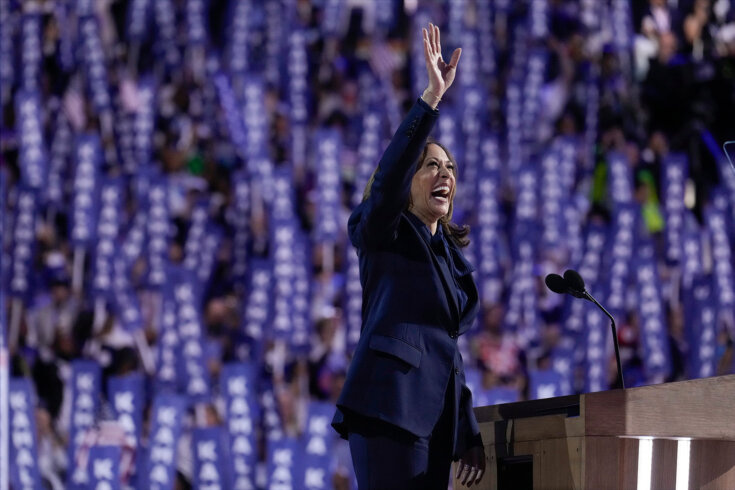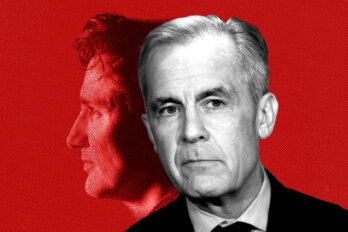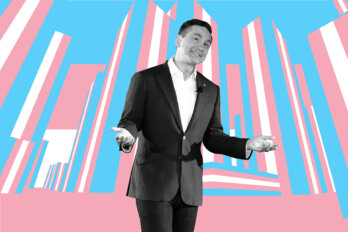In a campaign that has seemed to be led by vibes and memes, US Democratic presidential nominee Kamala Harris announced more than a dozen economic policies at a small North Carolina rally in August. She outlined a proposed ban on price gouging for groceries, reducing prescription drug costs, a cancellation of medical debt, and tax reductions for mid- to low-income families—including a tax credit that would provide $6,000 (US) per child to families for the first year of a baby’s life.
The Washington Post called the policies an “aggressively populist agenda,” indicative of economic government intervention in the name of low-income families. CNN, Fortune, The Washington Examiner, and more echoed the “populist” description of her plans. The following week, The New Republic wrote that Joe Biden’s speech at the Democratic National Convention “brimmed with populism” and the (for now) president’s time in office has seen him courting and praising unions and labour movements loudly. Then there’s Tim Walz—an almost comically folksy former football coach and everyman—whom British political and culture magazine The New Statesman described as having “populist roots.”
North American politicians have long looked to woo workers, but this designation seems surprising after nearly a decade of heavy association with Trumpism.
It all begs the question: Are the Democrats populist now?
At its very basic level, populism is a political movement or style of communication that claims to champion the common person in opposition to a real or perceived elite. It’s often grassroots action “opposing concentrated power in corporations and in government,” according to Michael Cornfield, political rhetoric expert and former associate professor at the George Washington University.
Rising support for populist parties has been mired in right-wing movements and populist authoritarian regimes in Latin America, Turkey, and more. The election of Donald Trump in 2016 is often seen as a turning point for populism in the West. Trump himself is considered by some experts as an authoritarian populist (a charismatic leader claims to embody the will of the people in order to “consolidate their own power,” according to Britannica), especially after the January 6, 2021, storming of the Capitol. It is worth noting that Trump’s particular blend of populism included xenophobia, racism, and more. Populism is a word that has been used to describe everyone from Conservative leader Pierre Poilievre to the left-wing Venezuelan president Hugo Chávez—a broad application that has received criticism for legitimizing extremist or dangerous far-right positions.
Political populism is anti-establishment and in the name of “the people”—think Trump’s “drain the swamp”—while economic populism includes policies that transfer resources from the wealthy to middle- and lower-income groups—think Bernie Sanders’s redistributive efforts to tax the 1 percent (or 0.1 percent).
According to Erik Nisbet, professor of policy analysis and communication at Northwestern University, Republican economic populism has primarily functioned through lowering tax rates for the working class and increasing tariffs—economically controversial taxes on imports that are aimed at protecting US manufacturing jobs (something that Biden has both preserved from Trump’s presidency and enacted himself.)
For Democrats, Nisbet points to populist pushes to raise taxes on high earners, antitrust regulations to break up conglomerates, from corporate landlords and big tech to oil and gas companies, and subsidies for working-class people (some of which Republican VP pick J. D. Vance has actually co-sponsored and may even be in line with Harris on—he wants to boost the child tax credit to $5,000 per child).
Despite populism’s strange historic and current bedfellows, Nisbet says its strategic positioning may be both geographically and demographically advantageous to Democrats in this election cycle.
On one hand, the US electoral college system means that this election may again come down to three key swing states—Pennsylvania, Michigan, and Wisconsin—all in the rust belt, where economic populism has proven popular among working-class voters left behind by globalization and de-industrialization (the same three states that Trump won in the 2016 election, costing Democrats that election).
On the other hand, Nisbet says research indicates that the global rise of populism can be partially attributed to younger generations being more anti-establishment, in their view of institutions like old-school government or massive companies, as well as being more socially liberal. The Democrats may be trying to speak to younger voters, Nisbet says. “Harris, who’s coming out of the establishment, has to dance between saying ‘Yes, I’m the Vice President for the Biden administration’ but ‘I’m also the candidate of change.’”
Nisbet also points to another fine line Harris walks with these policies—the chance to differentiate herself from Biden while still being his vice president.
“Even though the numbers of the Biden economy have been overall good, people have had a bad vibe about it because they can’t see and touch unemployment figures or GDP growth. What they can see and touch is inflation,” Nisbet says. “So that becomes the mental shortcut by which they judge the economy.”
The way that Harris can attempt to separate herself from this is by placing the blame solidly on profit-hungry corporations—from grocery conglomerates to big pharma—overcharging as a cause for inflation, thereby touting the need for price controls to rein them.
People hate inflation, “and lots and lots of Americans like the idea of the federal government doing something about it,” as per the Washington Post, which cites bipartisan blame on corporate profits and a late 2021 Fox News poll that showed 75 percent of Americans at least somewhat blamed “price gouging by companies” for inflation.
So this might be a popular plan—but is it populist?
“Populists attack elites as the source of political problems. I think that Kamala Harris works in a different tradition: the progressive tradition,” says Cornfield. “In the progressive tradition, you’re not attacking elite institutions, but you are using elite institutions to work for the people.” Harris’s grocery pricing proposal, for example, would have the Federal Trade Commission penalize “big corporations” that engage in price spikes, amongst other measures.
Cornfield says that although it’s too early to call the Harris campaign or her policies purely populist, her messaging so far has been far more in line with someone who fights for the people but is not necessarily of the people—a progressive prosecutor.
“She wants to use the law and the government and the Constitution to enact reforms to benefit the people,” he says. “So populism and progressivism are adjacent. Obviously, they’re harmonious on many issue positions, but from a rhetorical standpoint, they’re different.”
Of course, it’s all well and good to make promises while on the campaign trail. Trump, despite his populist positioning, slashed the corporate tax rate in 2017—a move far more in line with Reagan-era trickle-down economics than his current running mate’s purported plans to end the days of “catering to Wall Street.” Part of Harris’s policy proposals this August included a plan for the federal government to provide first-time home buyers with up to $25,000 for their down payments to help them build wealth through homeownership, but critics say this may just end up increasing already-soaring US housing prices (on top of leaving out renters entirely).
Both Trump and Harris are on board with the catchy, popular “no tax on tips” promise, but experts point out that 98 percent of low- to moderate-income workers don’t receive tips, and 37 percent of tipped workers don’t pay federal income tax because they don’t earn enough per year.
Although it seems that both parties are going toe to toe on populist promises, Nisbet wouldn’t overstate the Democrats’ involvement. It’s perhaps more akin to the party dipping its toe into populism, as opposed to Republicans, who have seemingly taken the plunge.
There is arguably legitimate anger at the state of work and life. The cost of living is rising, and wages aren’t keeping up—save for the top 1 percent of earners, whose pay has grown exponentially. Major companies’ profits reached new heights amidst the pandemic, and a recent report from a US think tank attributed more than half of 2023 inflation to corporate profit, or so-called “greedflation.” The system we have might not be working either.
The Democrats’ potential foray into populism, in whatever form that takes, may just indicate that the two parties have recognized the need to respond to this by shifting away from an economic model that gives outsized influence to corporations or institutions—or at least appear to in order to win the election.




